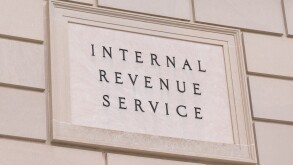The first two months of 2020 has already seen significant activity in the Australian tax world, with numerous Australian Taxation Office (ATO) and legislative updates on various issues such as cross-border arrangements involving intangible assets, stapled structures, hybrid securities and the research and development (R&D) tax regime.
ATO targets the mischaracterisation of intangible assets
The ATO has issued Taxpayer Alert 2020/1 setting out its concerns about cross-border arrangements that mischaracterise Australian activities connected with the development, enhancement, maintenance, protection and exploitation (DEMPE) of intangible assets. Broadly, this alert highlights the ATO’s concern that these arrangements may be non-arm's length or structured to avoid tax obligations, resulting in inappropriate outcomes for Australian tax purposes. Examples of these arrangements include certain cost-contribution arrangements (CCA) and certain contract R&D arrangements.
Broadly, these concerns include whether functions performed, assets used and risks assumed by Australian entities in connection with the DEMPE of intangible assets are properly recognised and remunerated in accordance with the arm's length requirements of Australia’s transfer pricing. In addition, the alert also notes that parties to these arrangements may fail to properly comply with other Australian income tax obligations such as capital gains tax (CGT) and capital allowances provisions, in situations where intangible assets and/or associated rights are migrated to international related parties as part of non-arm's length arrangements and/or in a manner intended to avoid Australian tax.
Buy-back/Redemption of hybrid securities
On February 12 2020, the ATO issued a discussion paper (TDP 2020/1), which sets out its proposed methodologies for determining market value when a hybrid note is bought back or a hybrid share is redeemed from an investor who holds the security on capital account. The sole purpose of the discussion paper is for the ATO to consult with industry on the proposed methodologies and the hybrid securities that could be covered by those methodologies, and the ATO welcomes all relevant submissions.
Broadly, this paper highlights the inconsistent tax treatment in relation to the redemption or buy-back of hybrid securities. For example, some taxpayers have assumed that the market value of the security does not need to be determined. Others have assumed that the market value is the actual proceeds received on redemption or buy-back. The ATO's proposed practical compliance approach is to accept that the market value of a hybrid security on its specified call date is equal to its face value.
If the hybrid security is listed on the Australian Stock Exchange (ASX) on any reinvestment date before the specified call date, the ATO is considering whether the market value should be calculated as the volume weighted average price (VWAP) over the last five trading days immediately prior to the first announcement date, adjusted for any accrued distributions. Alternatively, the issuer can obtain an independent market valuation using a methodology other than VWAP.
ATO updates taxpayer alert on stapled structures
The ATO has updated Taxpayer Alert 2017/1, which deals with the recharacterisation of income from trading businesses in relation to certain rental stapled structures, to account for new legislative developments with certain rental stapled structures.
Broadly, these updates seek to carve out certain rental staples which are now addressed by the Treasury Laws Amendment (Making Sure Foreign Investors Pay Their Fair Share of Tax in Australia and Other Measures) Act 2019, such as stapled structures involving the fragmentation of a single business between an asset-holding trust entity, which then leases the assets to the operating corporate entity. The alert will continue to apply to those rental stapled structures that are not covered under the new law.
The ATO warned that it will continue to review arrangements attempting to recharacterise trading income into more favourably taxed passive income. Under these arrangements, income generated by a business is shifted from a corporate tax entity to a flow-through trust. According to the ATO, this may result in a reduction of the overall rate of tax applicable to the business without any material change to the underlying nature, customers or owners of that business.
R&D tax incentive legislation passed by the House of Representatives
The Treasury Laws Amendment (Research and Development Tax Incentive) Bill 2019 was passed by the House of Representatives on February 10 2020 without amendment. It has been referred to the Senate Economics Legislation Committee for inquiry and report by April 30 2020.
Broadly, the Bill proposes to increase the R&D expenditure threshold from $100 million to $150 million and make the threshold a permanent feature of the law. It also seeks to link the R&D tax offset for refundable R&D tax offset claimants to claimants' corporate tax rates plus a 13.5% premium and cap the refundability of the R&D tax offset at $4 million per annum (however, offset amounts that relate to expenditure on clinical trials do not count towards the cap). In addition, it will increase the targeting of the incentive to larger R&D entities with high levels of R&D intensity, reduce the benefits provided to certain entities undertaking R&D activities and increase the benefit to others.
Jun Au
T: +61 2 9286 8258












